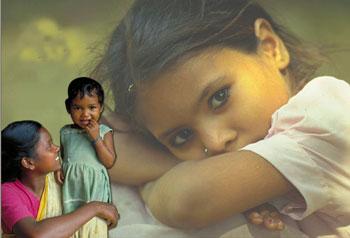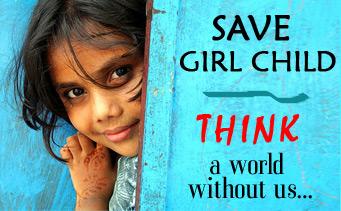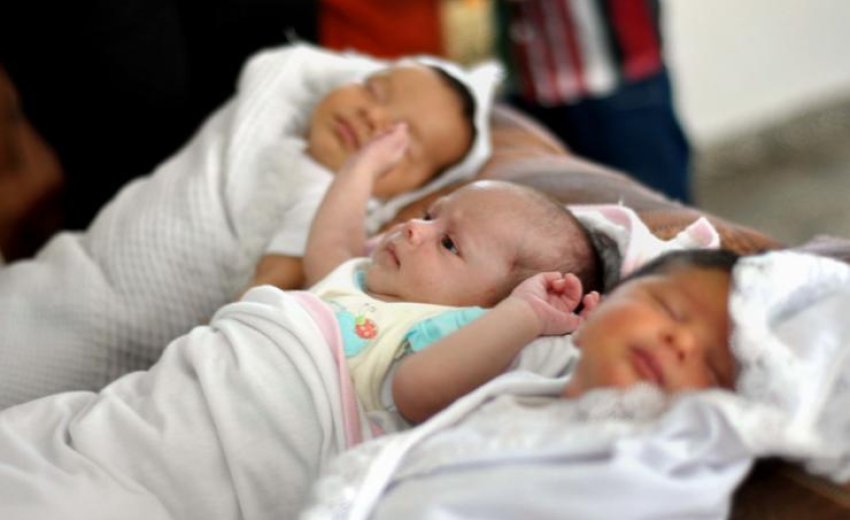 NEW DELHI: The Annual Report on Registration of Births and Deaths in Delhi 2008 that was released on Tuesday reinforced the city government's claims of a drastic improvement in the capital's sex ratio at birth from 848 females per 1,000 males in 2007 to 1,004 in 2008. While the ravings on Laadli continued, the scheme, if the report is to be believed, seems to be working with a distinct religious bias.
NEW DELHI: The Annual Report on Registration of Births and Deaths in Delhi 2008 that was released on Tuesday reinforced the city government's claims of a drastic improvement in the capital's sex ratio at birth from 848 females per 1,000 males in 2007 to 1,004 in 2008. While the ravings on Laadli continued, the scheme, if the report is to be believed, seems to be working with a distinct religious bias.
While the sex ratio at birth in Hindus and Muslims is 1,002 females per 1,000 males and 1,040 females per 1,000 males respectively, for Sikhs and Christians it is still languishing at 873 and 875, respectively. The figure is way below the acceptable international level of 952 females per 1,000 males and the national average of 933, according to the 2001 data. While officials explain the figures by saying that the number of Christian births in Delhi is too few, for Sikhs they admit that the largely prosperous community which is way outside the ambit of Laadli and notorious for its abhorrence for the girl child they cite the Punjab sex ratio as proof may not still have learnt to accept the birth of a girl.
There are also figures in the report which raise questions as to whether the dramatic improvement in sex ratio is actually an indication of a decrease in female feticide or simply underregistration of male births. In 2008, the number of girls born in institutions for every 1,000 boys was 915 but the same figure for home births stood at an astounding 1,303. Though chief secretary Rakesh Mehta is not willing to accept the hypothesis that there may be underregistration of male births "Parents of boys are usually very particular in these things'', is how he refutes it senior officials in Delhi government say 1,303 is too high a figure to be "natural''.
Explained a senior official: "Laadli in itself is an incentive to register girls. But there is no such incentive to register the birth of a boy child. There is also a chance that girls who were born elsewhere to fathers who are Delhi residents were registered here to take advantage of Laadli. These theories cannot be completely overruled because the only other explanation then would be that there is some amount of male feticide happening which is preposterous.'' Laadli, interestingly, has had just 23,706 registrations at birth in 2008 against an increase in 19,000 of the total number of girls born during the year.
The number of male children born in the city has incidentally gone down from 1.74 lakh in 2007 to 1.66 lakh in 2008. And the figure, somewhat surprisingly, has been constantly going down from 2005 when it stood at 1.78 lakh. The number of girls on the other hand has remained more or less constant over this period before registering a jump from 1.47 lakh in 2007 to 1.67 lakh in 2008. Commenting on the difference in sex ratios across religions, Mehta though sounded distinctly concerned about the Sikh figures. "The figures are worrying because unlike Christians the number of Sikhs in Delhi would be substantial. Sikhs are prosperous, so Laadli which is for families with an annual income of less than Rs 1 lakh does not affect them. It would have to do with the Punjabi connection. See how bad the sex ratio of Punjab is. Moreover the census figures clearly showed how south Delhi which is home to so many rich Punjabis and Sikhs have one of the worst sex ratios. What one needs to do to address that mindset has to be thought about now.''
Commenting on the difference in sex ratios across religions, Mehta though sounded distinctly concerned about the Sikh figures. "The figures are worrying because unlike Christians the number of Sikhs in Delhi would be substantial. Sikhs are prosperous, so Laadli which is for families with an annual income of less than Rs 1 lakh does not affect them. It would have to do with the Punjabi connection. See how bad the sex ratio of Punjab is. Moreover the census figures clearly showed how south Delhi which is home to so many rich Punjabis and Sikhs have one of the worst sex ratios. What one needs to do to address that mindset has to be thought about now.''
The figures also showed that more than 50% women become mothers before the age of 25 years and there is a distinct link between the level of education in women and the number of children they bear. While 42.53% of the fourth (or more) child were born to illiterate women, only 2% were born to graduates.
The death registration figures, on the other hand, show that more than 41% men die between the ages of 35 and 60 whereas the percentage of women of the same age group dying is about 31%. For a city that prides itself on its health infrastructure, a figure that may come as a shock is that the largest percentage (26.72%) of deaths occur due to causes which are not explained "symptoms, signs and abnormal clinical and laboratory findings'' is how the report puts down the cause of these deaths.

